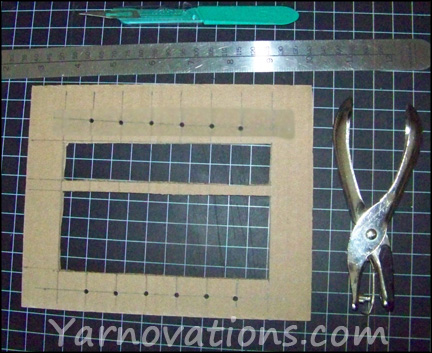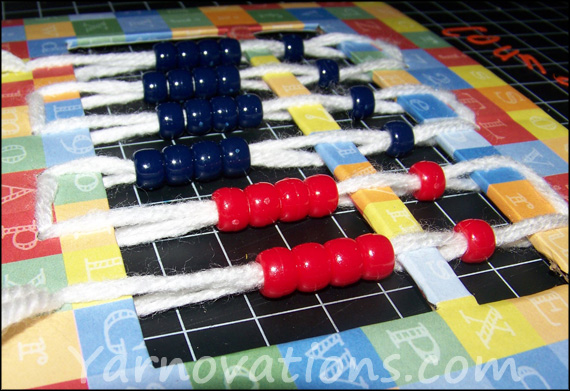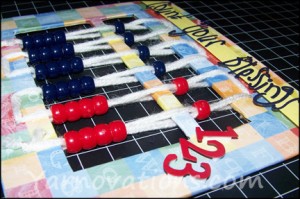How to Make a Center-Pull Ball of Yarn by Hand
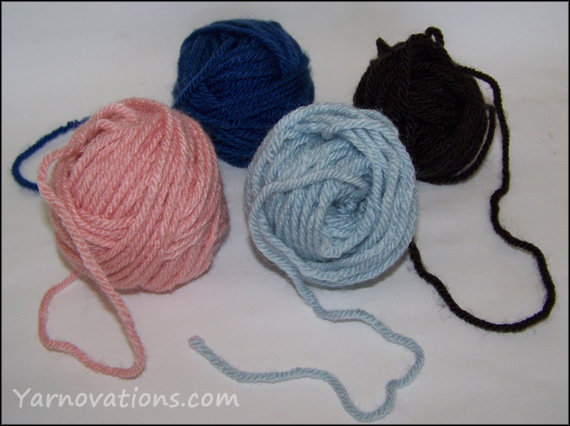
We’ll show you how to make a center pull ball of yarn by hand…no tools or special gadgets required. This simple technique will keep your yarn stash neat and your yarn tangle free.
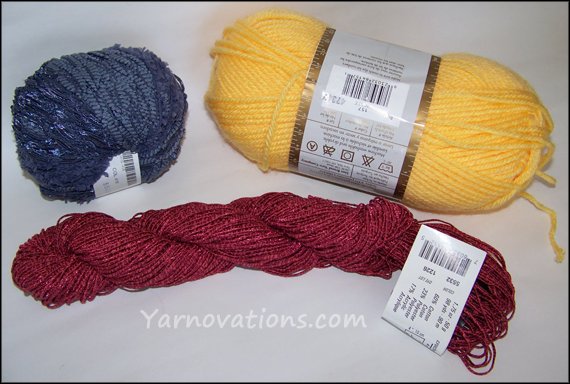
A center pull means that the yarn can be pulled from the center of the ball or skein. The ball stays stationary and does not flop around like it does when yarn is pulled from the outside of the skein.
Yarn comes packaged in several different ways.
Ball – Yarn wound in a round shape that has a center pull (purple ball top left in photo above).
Hank – A loose coil of yarn wound in a large circle with no center pull (red hank bottom in photo above).
Skein – An oblong ball of yarn with a center pull (yellow skein top right in photo above).
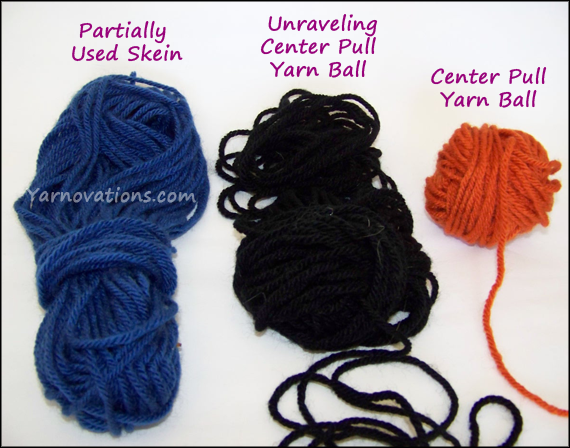
There are several reasons for making a ball of yarn:
- The skein is 3/4 used up and its shape is floppy and starting to turn into a tangled mess.
- The hank is easier to work with as a ball of yarn.
- A project has been frogged (ripped out) and needs to be turned into a ball.
- A previous ball of yarn is starting to unravel.
How to Make a Center Pull Ball of Yarn by Hand
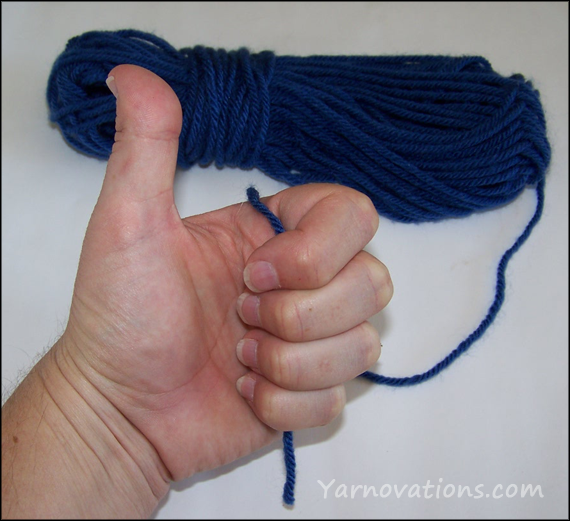
1. Lay a yarn tail across your fingers with your thumb pointed up and the tail of the yarn dangling below your little finger. Close your fingers around the yarn. You’ve now got a thumbs up to go ahead with the yarn ball.
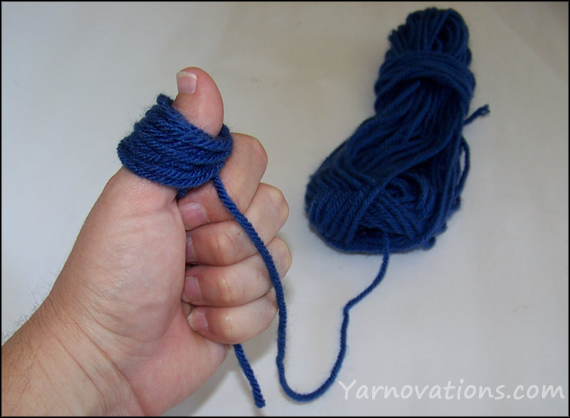
2. Wrap yarn around your thumb at and angle…I usually wrap it on an \ angle. Wrap the yarn around approximately 10 times.
3. Twist that group of yarn about 1/4 turn to the left (clockwise).
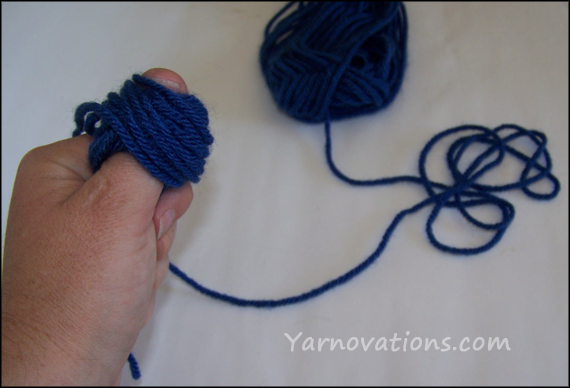
4. Wrap yarn around your thumb at the same angle \ as you did in step 2, again wrapping the yarn around your thumb about 10 times.
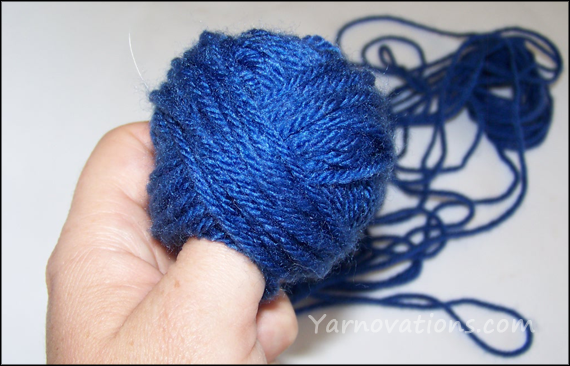
5. Repeat steps 3 and 2 alternately until your ball of yarn is made.
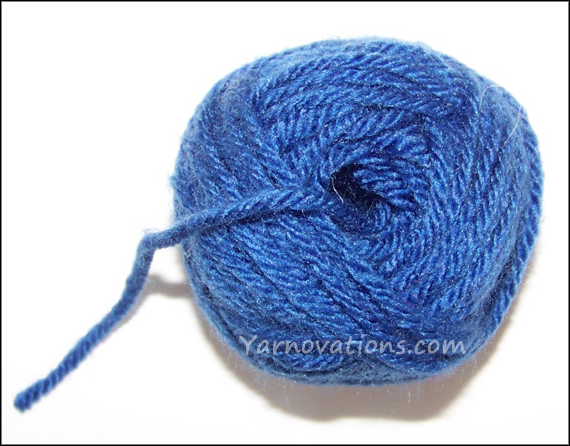
6. Remove your thumb from the center of the ball and that is where your center pull is.
Note: There are a lot of alternatives for this method of making a center pull ball of yarn.
- You can wrap around two or three fingers instead of your thumb.
- You can wrap around a knitting needle or crochet hook instead of your fingers or thumb.
- You can twist your hand/thumb instead of twisting the yarn.
- You can wrap the yarn around a piece of cardboard or plastic bobbin.
We use this center pull ball of yarn method ALL the time. We often find that after the center pull ball of yarn has been used a while, we will need to remake it. The partially used center pull ball tends to collapse and tangle (as seen in the black ball in the photo above).
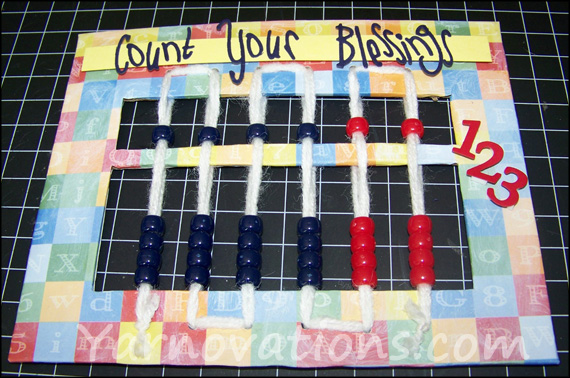 An abacus is a great way to make all kinds of calculations. Below we’ll show you how to make an abacus with yarn that’s perfect for kids of all ages. This arts and crafts project has two great math lessons – measurement and addition with an abacus. The colors on this abacus make it versatile. Teach numbers with two decimals such as currency or ignore the colors and teach whole numbers up to the 100,000’s.
An abacus is a great way to make all kinds of calculations. Below we’ll show you how to make an abacus with yarn that’s perfect for kids of all ages. This arts and crafts project has two great math lessons – measurement and addition with an abacus. The colors on this abacus make it versatile. Teach numbers with two decimals such as currency or ignore the colors and teach whole numbers up to the 100,000’s.